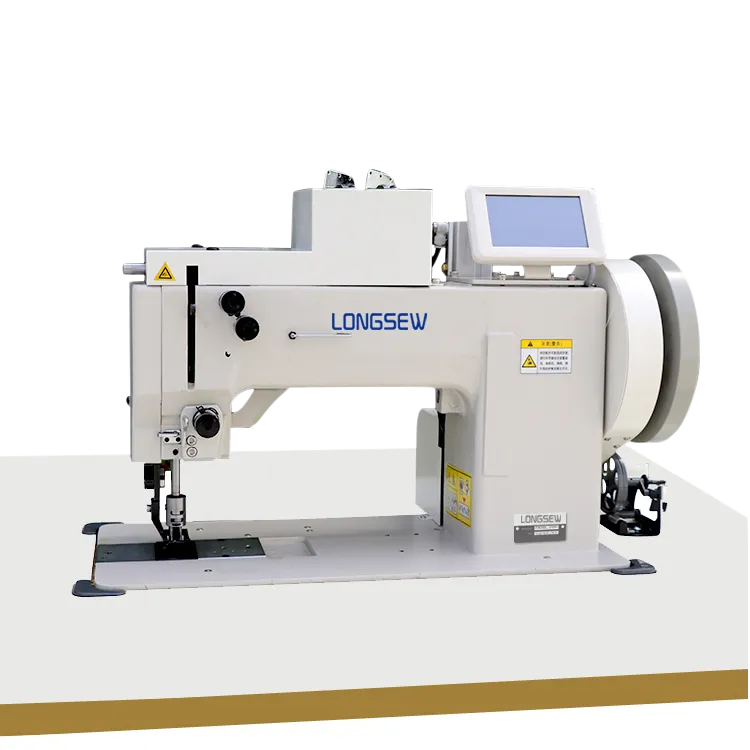Exploring the Benefits of Industrial Serger Sewing Machines for Professional Seamstresses
The Importance of Industrial Serger Machines in Modern Manufacturing
In the fast-paced world of modern manufacturing, efficiency and precision are paramount, particularly in the textile and garment industries. Among the essential tools that facilitate these attributes are industrial serger machines. These specialized sewing machines are designed to perform overlocking stitch techniques that significantly enhance seam durability and fabric finishing. Understanding the features, benefits, and applications of industrial serger machines is vital for manufacturers aiming to stay competitive in today's market.
What is an Industrial Serger Machine?
An industrial serger machine, also known as an overlock machine, is designed to stitch over the edge of one or two pieces of fabric for the purpose of preventing fraying, misalignment, and creating a finished edge. Unlike conventional sewing machines, sergers can trim the fabric as they sew, yielding a clean and professional finish. These machines utilize multiple threads, typically 3, 4, or 5, to create intricate stitch patterns that enhance both the aesthetic and functional qualities of textile products.
Features of Industrial Serger Machines
1. Multiple Thread Options Industrial sergers can accommodate various stitch configurations with numerous threading options. This versatility allows manufacturers to create different stitch types, from basic overlock stitches to more complex roll hems.
2. High-Speed Operations Designed for high-volume production, industrial serger machines operate at speeds that surpass traditional sewing machines. They can stitch at rates of 3,000 to 6,000 stitches per minute, making them indispensable in mass production environments.
3. Durability and Longevity Built to withstand continuous use, industrial serger machines are made with robust materials that ensure durability. Their maintenance-friendly design allows for regular servicing, ensuring consistent high performance over time.
4. Adjustment Features Many industrial serger machines come equipped with adjustable tension settings, stitch length, and differential feed mechanisms. These adjustments allow operators to fine-tune settings based on the specific fabric types and project requirements.
industrial serger machines

5. Safety and Ergonomics Modern industrial sergers also focus on the safety and comfort of operators. Features such as automatic blade systems and ergonomic design minimize the risks of workplace injuries and improve ease of use.
Benefits of Using Industrial Serger Machines
1. Enhanced Efficiency The capability of slicing and stitching in a single pass significantly reduces the time taken for garment construction. This efficiency translates into lower labor costs and higher production rates.
2. Improved Quality The precise nature of overlocking stitches ensures that seams are secure and professional. This quality reduces returns and improves customer satisfaction, as finished products have a better overall presentation.
3. Versatile Applications Industrial serger machines are not limited to clothing manufacturing. They are also widely used in industries producing upholstery, curtains, and other textile products, highlighting their versatility across various sectors.
4. Cost-Effectiveness While the initial investment in industrial serger machines can be significant, the long-term savings associated with reduced fabric waste, lower labor costs, and increased production capabilities often justify this expense.
Conclusion
In conclusion, industrial serger machines play a crucial role in contemporary manufacturing, especially in the textile and garment industries. Their unique ability to finish seams efficiently while ensuring high-quality results makes them an invaluable asset for manufacturers. As the demand for high-quality textile products continues to rise, the adoption of industrial serger machines will only grow, helping businesses optimize their operations and stay ahead in a competitive landscape. Whether you are a small workshop or a large-scale manufacturer, investing in reliable serging technology can make a significant difference in your production processes and overall success.
-
Industrial Cylinder Arm Sewing Machine: Revolutionizing Heavy-Duty SewingNewsJul.28,2025
-
Cylinder Arm Sewing Machine: Perfect for Special Sewing ApplicationsNewsJul.28,2025
-
Cylinder Bed Sewing Machine: Essential for Sewing Complex MaterialsNewsJul.28,2025
-
Heavy Duty Sewing Machine: The Essential Tool for Industrial ApplicationsNewsJul.28,2025
-
Computerized Pattern Sewing Machine: Revolutionizing Precision StitchingNewsJul.28,2025
-
Heavy Duty Industrial Sewing Machine: Power Meets PrecisionNewsJul.28,2025
-
Leather Sewing Machine: The Industrial Standard for Tough MaterialsNewsJul.18,2025





























